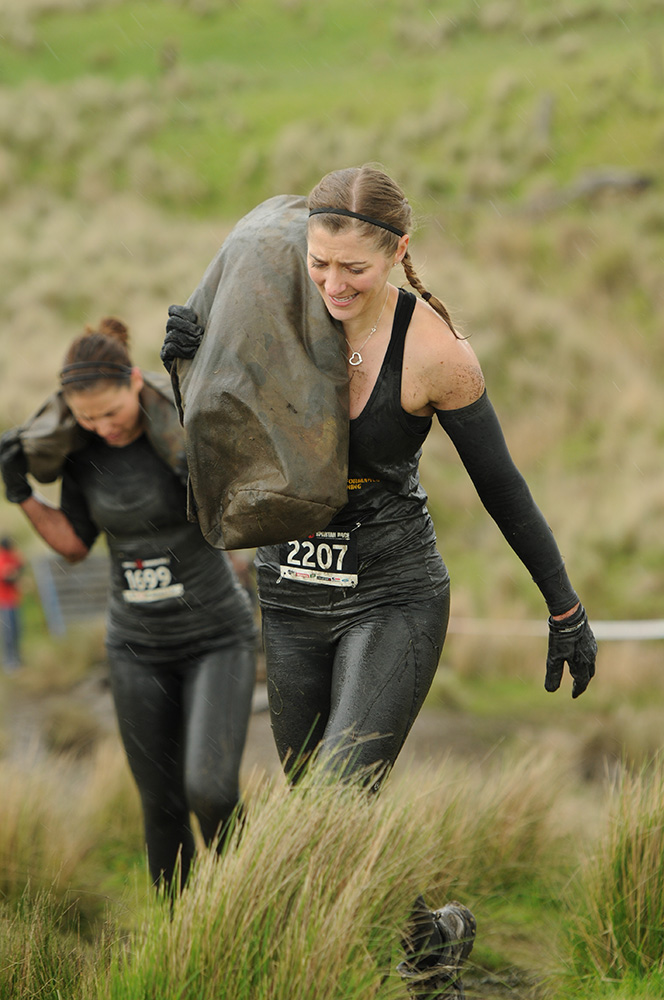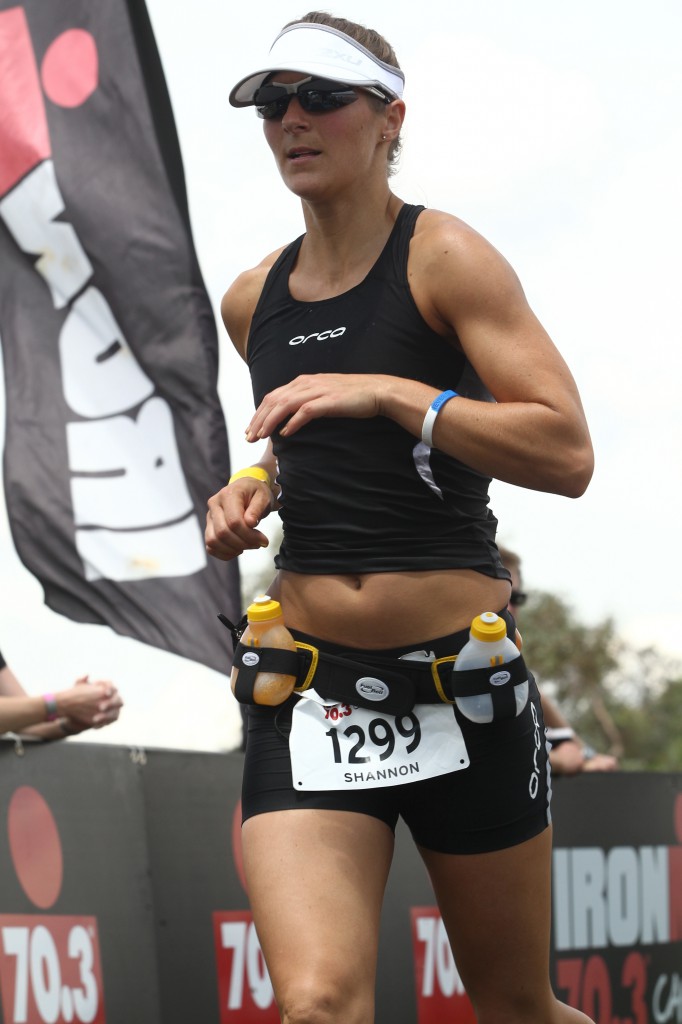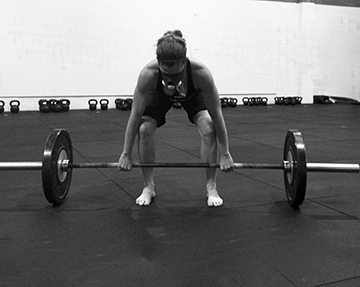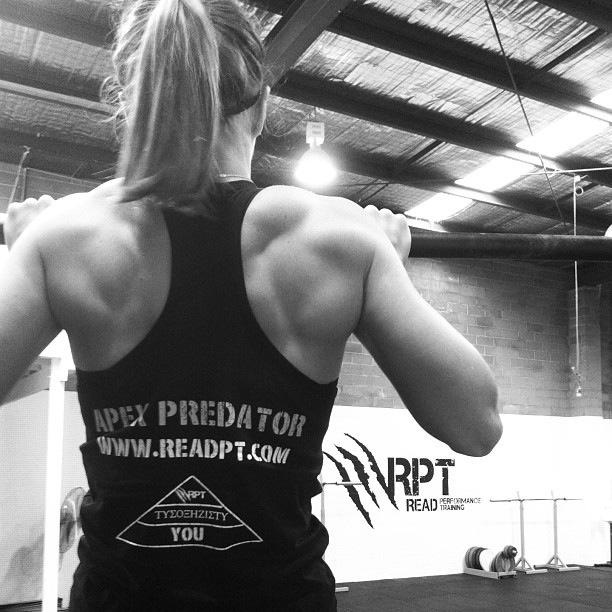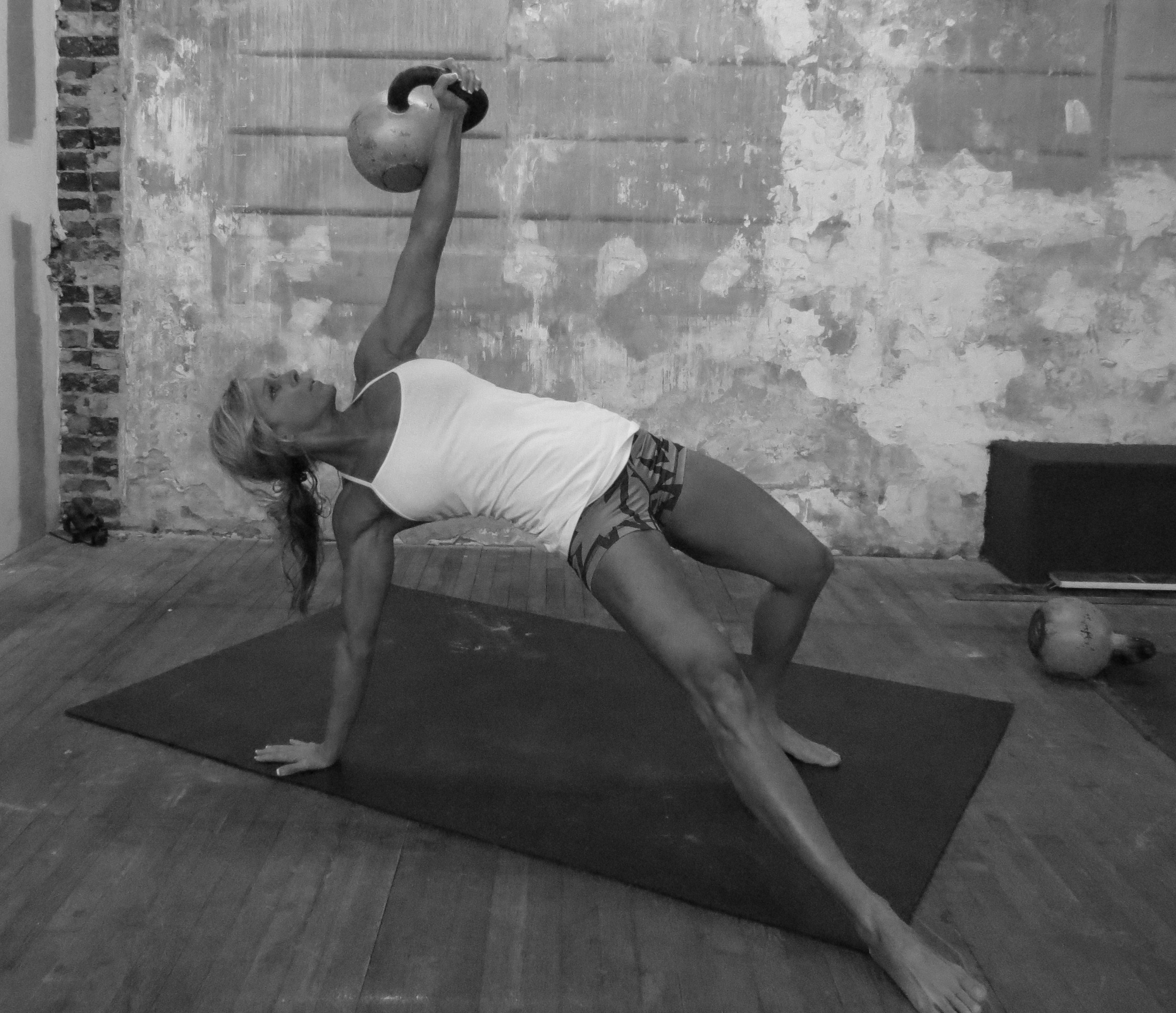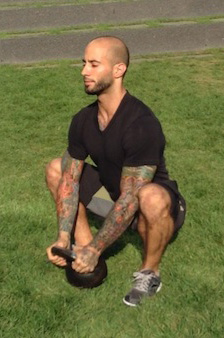Part three of this series on the hips continues the focus on dynamic hip action demonstrated in the second installment by implementing explosive hip drive into the Hanging Leg Raise sequence. After reading this and watching the companion video, you’ll have more control in your HLR while also running faster and jumping higher.
One of the great aspects of the PCC was the camaraderie developed over the three days. As we were sharing pull-up and flag stations, as well as spotting each other on handstands and bridging, we got to constantly coach and encourage each other. This was most evident during the Century Test, where the 55 attendees rotated through four testing stations. This meant that each of us had a cheering audience to encourage us through the Century.
Beth Andrews, Senior RKC and Iron Maiden (a title gained by doing a press, a pull-up and pistol with a 24 Kg. kettlebell) was the first person to pass the Century and gain her PCC certification. While the three guys next to her blew through their squats and pushups, Beth methodically did her own. The guys got to the bars to start their 20 hanging leg raises before Beth, but she ended up finishing first. While the Century isn’t a race, Beth’s hanging leg raises perfectly demonstrated the contrast between “linkage” and “leakage.” Beth’s leg raises could have been done with walls right in front and behind her, and she wouldn’t have touched them. She pulled her knees straight up, and pushed them straight down, deftly “linking” her movements into a total-body move. Meanwhile, the guys started noticeably swinging a bit in the HLR and had to stop their reps and kill their momentum so they didn’t get no-counted. They were “leaking.” Determined to mimic Beth’s HLR during my Century, I stepped up to the bar, started the sequence and began rocking a bit by my 5th rep. I “leaked.” The question was where.
As I quickly discovered at the GAIN Conference (discussed in part two of this series), I was leaking from the ankles up through the hips. Gary Winckler, Head Coach of the University of Illinois Women’s Track Team, led practical sessions at GAIN to demonstrate the importance of hip drive and ankle tension in the sprints. Over the course of his illustrious career at Florida State and Illinois, Mr. Winckler has coached over 300 All-Americans and 13 Olympians in the sprints and hurdles. He told us that the common coaching cues in the sprints—“stride it out” and “kick your butt”—had transformed sprint mechanics from being powerfully hip-driven to being weakly knee-driven. Striding as far as possible, we extend our knees, driving our posture forward. Then, to look pretty, we weakly flex our knees to kick our butts. As Coach Winckler demonstrated, the point is to create power by pushing through the ground with powerful hip extension on one leg, while spring-loading the other leg in hip flexion and prepping it to drive down. The up/down motion generated by the hips allows the runner to maintain the upright posture most effective for generating force into the ground.
While I made improvements on my stride working on the track, the lesson of hip drive didn’t really hit home until the next day’s session in the weight-room with Coach Jim Radcliffe of the University of Oregon (See part two of this series for more on Coach Radcliffe.). As a powerful hip hinge is a huge part of running faster and jumping higher, Coach Radcliffe tries to teach it in as many contexts as he can. He uses the hanging leg raise sequence to demonstrate how linking the hips/ankles into the movement can produce a more explosive leg raise without compromising posture. For me, Coach Winckler’s advice on the track hit home on the bar. A dynamic combination of hip flexion/extension and active ankles in the hanging leg raise cured me of my swaying motion. He was right: I had been weakly flopping through the knees and not driving up and down through the hips. After doing these dynamic hanging leg raises, I went back to the track, found the hip and ankle link, and produced the most powerful sprints I’ve ever run.
Please watch the accompanying video to learn this “plyometric” HLR progression. You’ll better understand linkage in your HLR sequence and benefit in your sprints and jumps.
***
Mark Bixby is a Dragon Door RKC Team Leader, PCC Instructor and MovNat Instructor. He discovered kettlebells in 2002 and found that they are the quickest, most effective way to train. A combination of past injuries and persistent low physical self-image had caused Mark to have severe posture issues and chronic back pain. Kettlebells taught Mark how to use his hips so that he didn’t tuck his pelvis and slump with his posture. He grew taller, stronger and more confident. More than six years later, Mark has accomplished huge gains in strength, flexibility and stability and he finds that kettlebells still present significant physical and technical challenges. Because the skill set can always be refined, kettlebells continue to push Mark towards higher levels of body awareness and fitness. Mark can be reached through: http://www.dkbfitness.com/.
